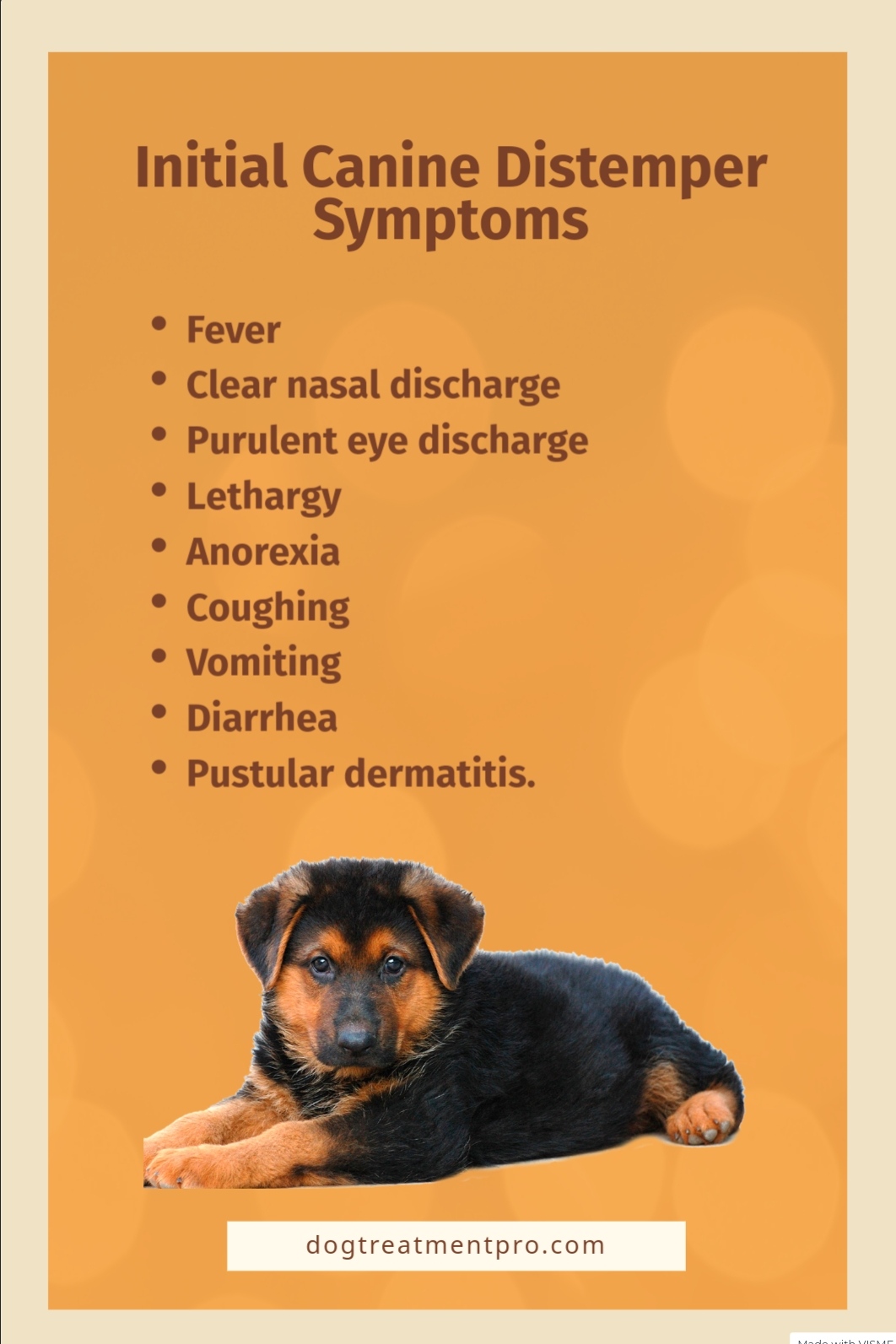highly contagious and spreads through contact with infected bodily fluids and contaminated objects Distemper in dog symptoms vary
Canine distemper Overview
Canine distemper is a highly contagious viral disease that affects dogs and other animals such as raccoons, ferrets, and skunks. It is a serious and often fatal disease that is caused by the canine distemper virus (CDV). The virus attacks the respiratory system, gastrointestinal tract, and nervous systems of the infected animal.
Distemper in dog symptoms can vary depending on the severity of the infection and the stage of the disease, but some common symptoms include fever, coughing, sneezing, nasal discharge, vomiting, diarrhea, loss of appetite, weight loss, and neurological symptoms such as seizures, muscle twitching, and paralysis.
Treatment for distemper is supportive and involves addressing the symptoms as they occur. There is no cure for distemper, and once an animal is infected, it must be isolated to prevent further spread of the disease.
Prevention through vaccination is the best way to protect dogs from distemper. Regular vaccination is recommended for all dogs, starting at 6-8 weeks of age.
Etiology of Distemper in Dog .
Canine distemper is caused by a virus called canine distemper virus (CDV), which belongs to the family Paramyxoviridae.
The virus primarily affects the respiratory, gastrointestinal, and nervous systems of dogs, but can also infect other animals such as foxes, wolves, raccoons, and ferrets.
Pathogenesis of Canine Distemper.
The virus is highly contagious and can spread through direct contact with an infected animal’s bodily fluids, including saliva, urine, and feces.
It can also be spread through airborne transmission, such as when an infected animal coughs or sneezes.
Once the virus enters the body, it replicates in lymphoid tissues and then spreads to other organs, including the respiratory and gastrointestinal tracts, causing fever, coughing, sneezing, diarrhea, and vomiting.
The virus can also invade the nervous system, causing neurological symptoms such as seizures, tremors, and ataxia (loss of coordination).
The severity of the disease can vary widely depending on the age, health status, and immune response of the dog. Puppies and dogs with weakened immune systems are particularly vulnerable to severe and potentially fatal forms of the disease.
treatment is mainly supportive and aimed at managing symptoms and preventing secondary infections.

Distemper in Dog Symptoms.
Symptoms of distemper in dogs can vary, but typically include the following:
Respiratory Symptoms:
sneezing, coughing, discharge from the nose and eyes, and difficulty breathing.
Gastrointestinal symptoms:
As vomiting, diarrhea, and loss of appetite.
Neurological Symptoms:
seizures, tremors, and weakness in the limbs.
Behavioral Symptoms:
depression, loss of interest in food and water, and changes in behavior.
In severe cases, distemper can also cause inflammation of the brain, leading to paralysis and death. Puppies and older dogs are particularly vulnerable to the disease.
distemper in dog diagnosis
Diagnosing canine distemper involves a combination of clinical signs, medical history, and laboratory tests. Here are some of the ways that veterinarians diagnose distemper in dogs:
Clinical Signs:
The veterinarian will perform a physical examination of the dog to look for signs of distemper, such as respiratory problems, eye discharge, vomiting, diarrhea, fever, loss of appetite, and neurological symptoms.
Canine distemper is sometimes confused with other systemic infections, such as canine parvovirus, canine hepatitis, and leptospirosis.
as many of the clinical signs and laboratory test results can be similar to those of other viral diseases.
İt can present a challenge for veterinarians when trying to make an accurate diagnosis with other confirmation test as PCR and Antibodies detection
Medical History:
The veterinarian will ask the dog owner about the dog’s medical history, vaccination status, and any recent exposure to other dogs.
Laboratory Tests:
Blood tests can be used to detect the presence of the distemper virus antibodies in the dog’s body.
Other tests, such as PCR (polymerase chain reaction) and E LISA (enzyme-linked immunosorbent assay), can also be used to detect the virus.
Imaging Tests:
Radiographs (X-rays) and ultrasound may be used to evaluate the dog’s respiratory system and internal organs for signs of distemper.
Distemper in Dog Treatment.
The treatment of distemper in dogs can be challenging, and it mainly focuses on supportive care and controlling secondary infections. Here are some common treatments:
Hospitalization:
Severely infected dogs will need to be hospitalized, where they can receive intravenous fluids, oxygen, and other necessary medications.
Medications:
Antibiotics may be prescribed to treat secondary bacterial infections, while anticonvulsants may be used to control seizures. Medications may also be given to relieve symptoms such as vomiting and diarrhea.
Nutrition:
A proper diet is important to support the dog’s immune system, and highly palatable food may be recommended to encourage the dog to eat.
Isolation.
Dogs with distemper should be isolated from other dogs to prevent the spread of the virus.
Prevention: Vaccination is the best way to prevent distemper in dogs. If the infected dog recovers, it is essential to keep them up-to-date with their vaccinations.
It is essential to consult with a veterinarian if you suspect your dog has distemper, as early treatment can improve the chances of recovery
Distemper in Dog Prevention
Prevention of canine distemper involves
vaccination and taking steps to reduce the risk of exposure to the virus.
Vaccination.
- It is important to keep in mind that Vaccination is the best way to protect your dog from canine distemper and is part of routine vaccinations for puppies.
- You should follow your veterinarian’s recommended vaccination schedule to ensure your dog is properly projected.
- Puppies should receive their first vaccination between 6 and 8 weeks of age, with additional vaccinations given every 2-4 weeks until they are 16-20 weeks old.
- Adult dogs should receive booster vaccinations every 1-3 years, depending on the vaccine used and the dog’s risk of exposure.
- To reduce the risk of exposure to the virus, dogs should be kept away from other dogs that are sick or have an unknown vaccination status.
Dogs that are exposed to other dogs, such as those that visit dog parks or attend dog shows, are at a higher risk of exposure and should be vaccinated and monitored closely for signs of illness.
It is also important to keep living areas clean and disinfected, especially if there has been a recent outbreak of distemper in the area.
Overall, prevention is key when it comes to canine distemper. Vaccination and taking steps to reduce exposure to the virus can help keep dogs safe and health.

